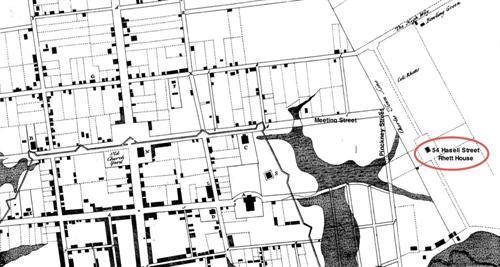| Sir NathanielJohnson |
Governor March 1703 – November 1709
Born in England in 1644, Nathaniel Johnson had become a prominent merchant by 1686, when the Lords Proprietors made him a cassique of South Carolina, and he received appointment as governor of the Leeward Islands. Resigning that post in 1689, Johnson moved to Carolina.
Nathaniel Johnson entered politics as an ally of the Goose Creek Men, and he was commissioned governor of the colony in June 1702. Taking over from deputy governor James Moore in March 1703, Johnson quickly moved to limit the rights of Dissenters. After the proprietors disallowed the Exclusion and Church acts of 1704, the Establishment Act of 1706 became law and controlled South Carolina’s government until the Revolution.
The colonists' constant fear of attack from Spanish Florida sharpened when England declared war against Spain. A wall along the eastern edge of Charles Town had been planned since 1694, but construction had been sporadic. In late 1704 governor Johnson reported that the project remained incomplete, and pushed for funding a new plan: a ring of fortifications around the town, with a curtain wall connecting the defensive works. The fortified city was tested in August, 1706, when a French and Spanish fleet appeared in Charleston Harbor. With governor Johnson leading the defense, the invasion was repelled.
Carolina politics, however, remained tumultuous. In December 1708, the proprietors appointed Edward Tynte to replace governor Nathaniel Johnson. Johnson remained in office until his successor arrived in Charles Town in November 1709.
Nathaniel Johnson retired to his Silk Hope plantation, where he died in 1712. Among South Carolina’s later governors were his son, Robert Johnson, and Thomas Broughton, the husband of his daughter Anne Johnson.
Butl
 FortifiedCharleston1711_500x500.jpg) |
Edward Crisp, “A Compleat Description of the Province of Carolina in 3 parts.” 1711. American Memory, Library of Congress http://memory.loc.gov/ The walled city, 1711. The fort at Windmill Point on James Island was named for Governor Nathaniel Johnson.
|
 SilkHope1696_500x500.jpg) |
Nicolas Sanson, “Carte Particuliere de la Caroline.” Amsterdam, Pierre Mortier, 1696. From the collections of the Birmingham Public Library http://alabamamaps.ua.edu Nathaniel Johnson settled “Silk Hope” plantation by 1689. It was granted to him in 1696 as 1,940 acres.
|
 SilkHope1711_500x500.jpg) |
Edward Crisp, “A Compleat Description of the Province of Carolina in 3 parts.” 1711. American Memory, Library of Congress http://memory.loc.gov/ Nathaniel Johnson was buried at Silk Hope Plantation in 1712.
|
 |
Bishop Roberts and W. H. Toms, The Ichnography of Charles-Town at High Water. London, 1739. When he took over the governorship, Sir Nathaniel Johnson moved into the house that his predecessor, James Moore, had rented from Jonathan Amory's estate. He occupied the property only six months. While the next tenant, Mrs. Elizabeth Hastings, was living there, the Amory house burned. William Rhett replaced it with the substantial brick residence at today's 54 Hasell Street.
|